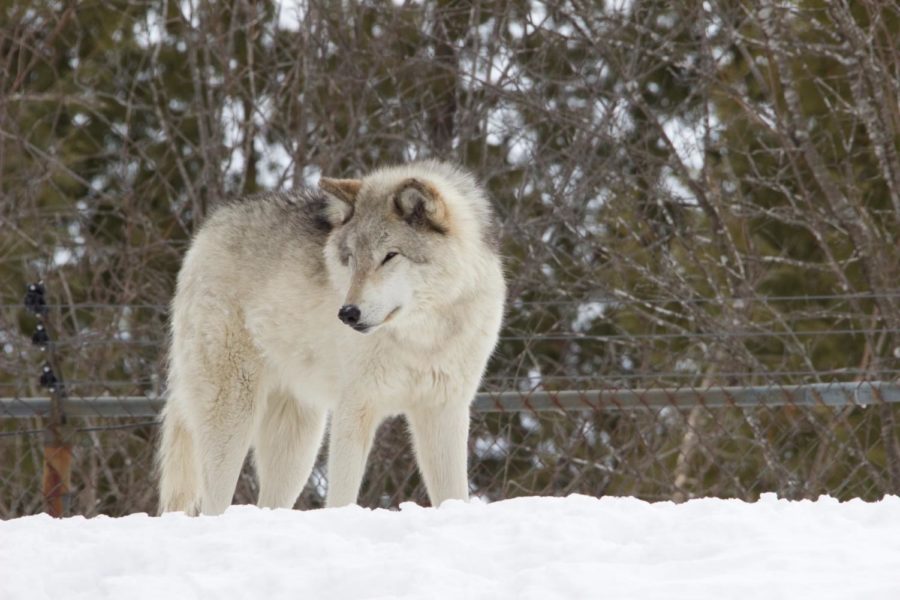Editorial: Conservation laws and wildlife
The ISD Editorial Board argues people are failing wild animals and explains how we can do better by adhering to the North American Model of Wildlife Conservation (NAM) guidelines.
March 28, 2021
Killing a living animal is hard. At least, it should be. There is a reverence and respect for life that a hunter should recognize when they choose to harvest an animal. Indeed, many hunters do learn this when they are taught how to hunt by an elder.
Unfortunately, not all hunters carry this responsibility, and their actions can reflect poorly on the hunting community as a whole when they purposelessly poach wildlife. These are the people that drive a wedge between those who choose to hunt and those who choose not to.
That respect for wildlife is something each hunter must carry and observe on their own. Conservation, on the other hand, is something that all hunters and nonhunters alike must do together.
As the top of the food chain, we all play a role in ensuring that wildlife is cared for and protected to the best of our abilities. Humans are unique in that we’ve managed to control our environment to a greater degree than any other species could hope to. It is then our responsibility to ensure we are managing wildlife in a way that is beneficial for its future, not necessarily ours.
The guiding principles that have shaped wildlife conservation in the U.S. are now known as the North American Model of Wildlife Conservation (NAM). These ideas have been around since the early 1800s and have played a big part in many conservation success stories, including that of the American bison. When species have been ignored, all have been hunted to extinction, as is the story of the passenger pigeon.
Recently though, the NAM has come under scrutiny for its inability to guide conservationists through modern-day problems relating to wildlife. What are states to do when current conservation laws begin to have adverse effects on the population of a species?
For example, in Wisconsin, hunters harvested 216, or 20 percent, of the state’s wolves in just three days before state officials closed the season. That season was in line with a state law requiring annual hunts for animals that have healthy populations and aren’t considered endangered.
In Montana, elk populations are much too high on private land and much too low on public lands. As landowners control hunting access on their property, state conservationists have struggled to prescribe appropriate hunting seasons and quotas to keep Montana’s total elk population at a healthy level.
While the NAM may have its faults, it is not a set of directions. It is a set of values that conservationists and lawmakers should adhere to as they decide how best to manage wildlife. The problems in Wisconsin and Montana can be solved by legislating with the seven points of the NAM in mind.
-
Wildlife is a public resource. Much like state and national parks, wild animals are not to be owned by individuals but enjoyed by everyone and thus taken care of by everyone.
-
Wildlife is not to be commercialized. Individuals are not to profit from the exploitation of wild animals.
-
Wildlife should be protected and managed using a set of rules and regulations put forth by conservation agencies with the power to enforce such.
-
Wildlife should be harvested for a purpose. Needless poaching and reckless killing are a waste of this precious resource.
-
Wildlife ignores state and international boundaries and so should we when working to conserve wildlife populations. What we do to migratory species in one part of the world affects that population when it moves to another part.
-
Science should guide conservation. Hunting seasons and quotas should align with data and evidence produced by biologists to help the population.
-
Everyone gets a say in hunting. As a public resource controlled by the general population, neither wealth nor privilege should afford someone more or less access to wildlife.
By following these seven ideals, landowners in Montana and hunters in Wisconsin would have avoided the consequences of their poor conservation practices.
Notice that it is the landowners, who may or may not be hunters, that aren’t adhering to the seven principles of the NAM well enough to avoid problems. Elk hunters in Montana and the state conservation agency essentially have their hands tied if landowners refuse to treat wild game as a public, noncommercial resource.
Now, it is the fault of hunters and poachers in Wisconsin that wolf populations may suffer. They have ignored that wolves are a public resource, vital to the ecosystem, and must be protected for years to come. These hunters disregarded the prescribed quota, hunting nearly twice as many wolves as conservationists deemed healthy.
It is not the NAM that has failed. It is we, the people who are responsible for wildlife conservation who have either deliberately gone against the ideas of the NAM or sat idly by as others have done so. Hunting isn’t for everyone, but it is the most powerful tool available to conservationists to manage healthy wildlife populations. If it is to continue, we must do better.







